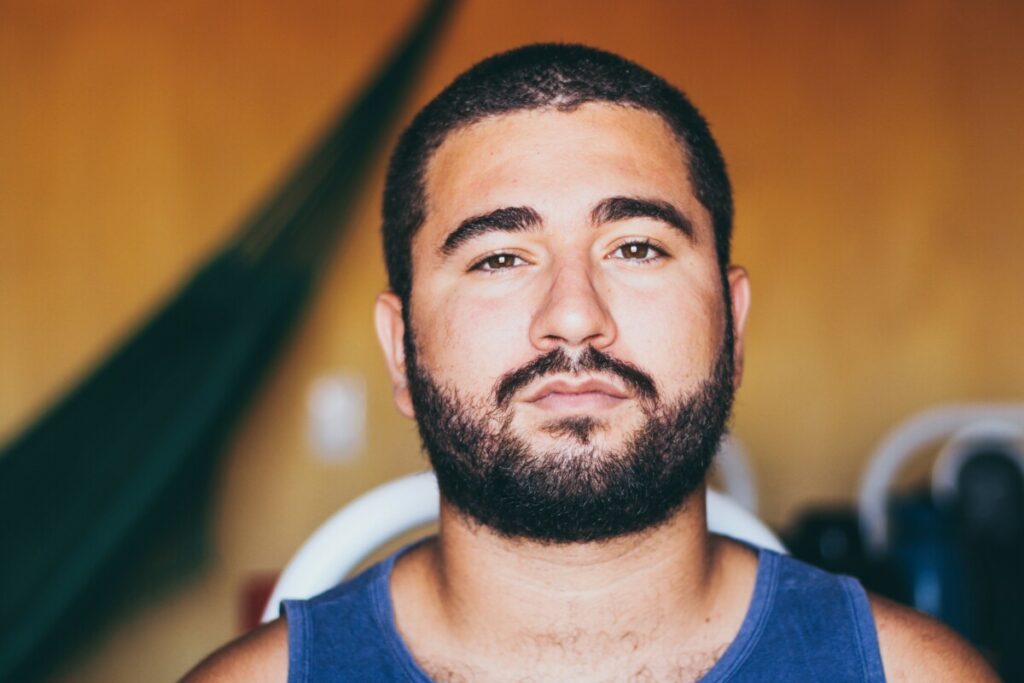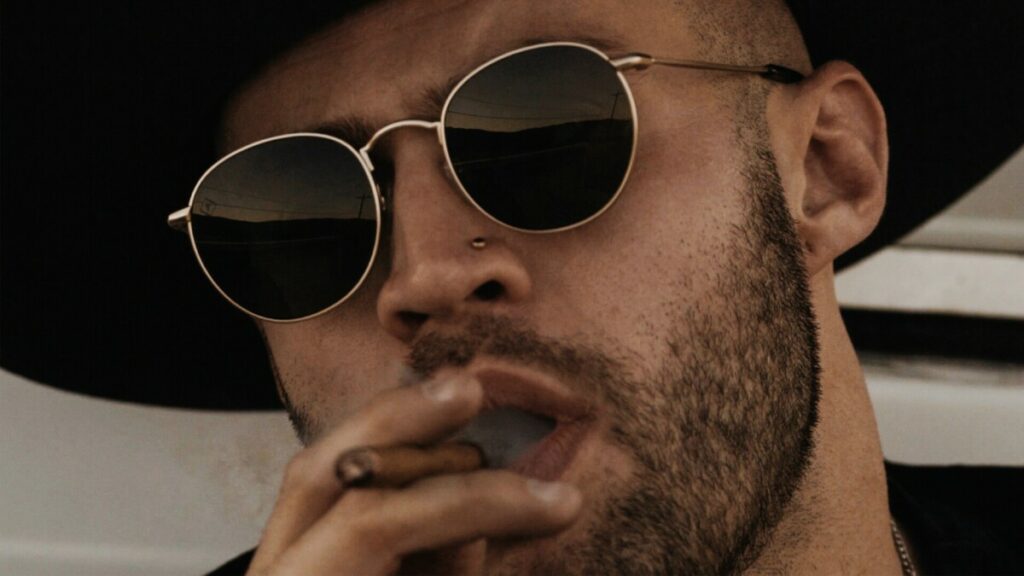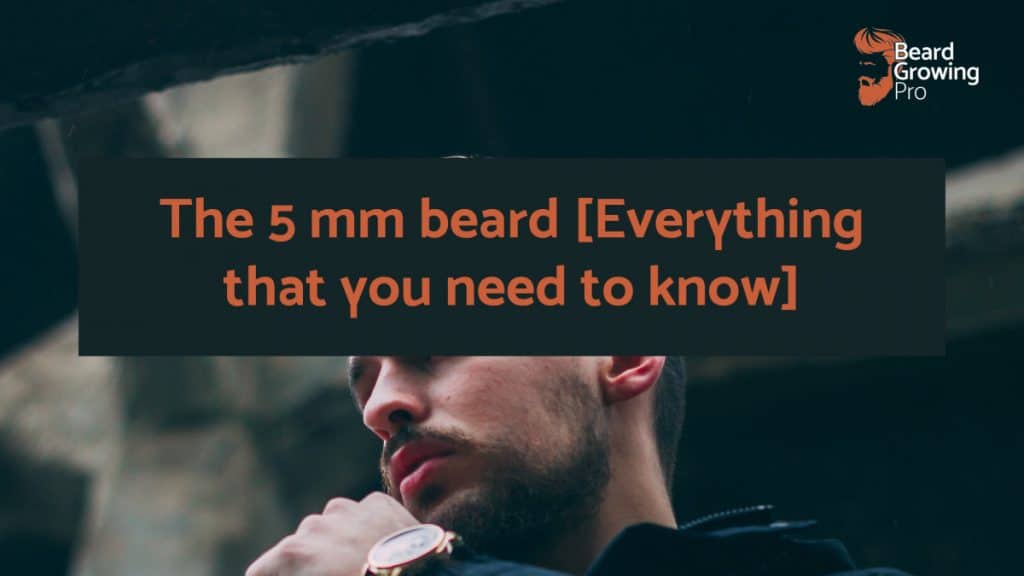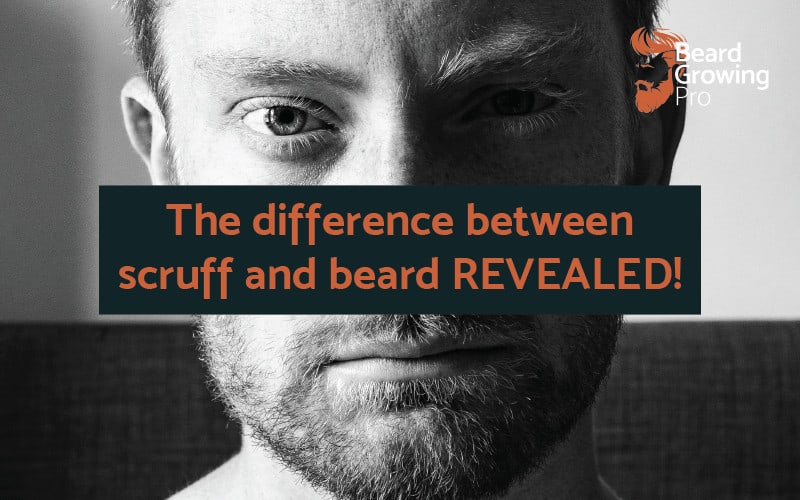As people grow a beard, they notice that it goes through a scruffy stage. While I was growing my long beard, I certainly felt that my beard was the length where it could be considered scruff at about the two-week mark. There is no agreed-upon length at which scruff becomes a beard, and the properties of the beard likely determine whether people consider a beard scruff like or closer to a full beard.
One of the biggest differences between scruff and a beard is the length. Scruff is typically 3 to 5 mm in length and still follows the contours of the face and jawline. A full beard sits off the face and typically be greater than one inch long.
A short beard will look fluffy on the edges as the hair has not become long enough to be cut into a defined shape. You will also still see the skin underneath a scruffy beard.
Having a scruffy beard is relatively trendy as it can be grown in as little as 2 to 3 weeks and provides a complete change of your appearance. There is no reason a scruff beard needs to look unkempt, and in this article, I will share with you all of the differences between scruff and a beard and

Article Contents
Scruff vs a beard
So that you can completely elucidate in your mind the difference between scruff and a beard, I have put together a collection of defining features that can separate scruff and when it is starting to be considered a full beard.
Shorter vs longer
One of the most defining and important features of a scruff beard is that it is not very long. It is typically 3 to 5 mm long and provides a certain fuzziness to the cheeks and chin.
A scruff beard is short enough to still see the skin under the beard and it has not grown long enough to form a complete, coherent structure around the lower part of the face.
Importantly, the scruff beard has no defined direction in hair growth. Because the hairs are so short, the hair can curl upwards, downwards, and in any direction. It is not until the hairs reach approximately half an inch in length that they start to form a cohesive direction of growth.
A beard is typically much longer, and it no longer conforms to the shape of the jawline. A beard that is approximately 1 to 2 inches in length is heavy enough to start to grow downwards under the influence of gravity.
Because the hairs sit off the face, the jawline can be trimmed into different shapes.
There is no agreed-upon length or timeline at which a beard changes from scruff to a beard, but for most people, the gradual change happens between the first and third months of continual beard growth.
Messy vs clean lines
Sometimes a scruff beard can be considered messy because it is relatively short. The hair’s short length means that it is growing in any direction it wants.
This short hair can create a fuzzy edge to cheeks and jawlines, leading some people to believe that their beard is scruffy.
It isn’t easy to create a clean line of beard growth when the hair is shorter. If you have a very high density of beard hairs on your cheeks, you can grow out of the scruffy phase much sooner.
Longer beards form a more cohesive network of hairs on the face. The cohesive network of hairs means that the density of the beard is much higher and can be trimmed much like a garden hedge.
After my beard passed the four-month stage, I was able to redefine my jaw shape completely, and my beard started sitting much further away from the surface of my skin.
Because the beard hair is more interwoven and sits further off the face, you can cut in some defined lines to the bottom shape of the beard. This trimming is something that is not possible with a short scruffy beard.

Multiple lengths vs even lengths and fades
Your beard hair will grow at different rates depending on where it is situated on your face.
It is different for different people, and my chin and moustache grow much faster than the sides of my beard.
In the early stages of beard growth, it can be easy to identify the different lengths of your beard across your face. This array of different lengths can cause your beard to be classified as scruff.
To create a cohesive and single length, you must grow out the beard until the shortest and slowest growing parts of your face have reached the length that you wish your beard to the all over.
It can take some time and patience to push through a very uncomfortable stage to turn your scruff into a beard of uniform length.
In the early stages of beard growth, it is likely that your beard will be the same length all over and that you can maintain it with a simple tremor with a single guard to define its length.
As your beard gets longer, you will be able to put in different lengths, and the different lengths will become paramount to make sure that your beard holds a certain shape.
For example, the longest hairs on my face are at the front of my chin. The shortest is towards my neckline.
Once your beard hair gets long enough that you have to cut in multiple lengths to maintain the shape and style of your beard, it has certainly left the scruff phase of growth.
No defined edges vs shaved neck and cheeks
People with scruff beards often do not trim up the cheek line or neckline of their beards. In the early stages of growing a scruff beard, the goal is to grow out as much length as possible and not discriminate initially where the growth is happening.
The most obvious points of a scruff beard are on the cheek line and the neckline.
When your beard is short, the neckline is incredibly obvious, and a well-trimmed neckline can change a scruff beard to a well-maintained stubble beard.
A defined cheek line that sweeps nicely from the front edge of your sideburn to the top edge of your moustache can help turn a scruff beard into a full looking beard.
Providing as much contrast as possible between the skin and the beard with a defined line can help turn your scruff beard into one that looks more dense and full.
Once a full beard becomes long, the neckline is not visible and is often not as well maintained as when the beard was shorter. I often shave the underside of my beard and neckline to stop the hairs on the front of my face from being pushed out so that my hair grows downwards.
There are all defining features of what separates scruff from a beard.
Perhaps your beard is not quite long enough to be considered a full beard and is still on the scruff side of the fence. Let’s look at what is arguably considered scruff and the properties of a scruff beard.

What is considered scruff?
Is your beard considered scruff?
You may be wondering if your beard looks full and thick enough to be considered a full beard or if you are still on the scruff side of growth.
Having a scruffy beard can sometimes be undesirable, but there are many ways to turn a short 5 mm beard into an excellently styled and good looking addition to your face.
Shorter length
Scruff beards tend to be much shorter and between three and 5 mm long.
Counterintuitively, a 5 mm beard requires more regular trimming and lining up than a full beard.
For a 5 mm beard to look clean and sharp, you have to line up the cheeks and neck regularly. You can do this using a single blade safety razor to remove the hairs which escape beyond the bounds of your beard.
Also, it would help if you considered using your trimmer with a 5 mm guard every couple of days to reduce the amount of fuzziness that grows out. This fuzziness is because different areas of your face grow beard hair at different rates.

Messy
Shorter scruff beards tend to become messy much quicker than longer beards. You should trim up the length of the beard more often, and you should also line up the cheek line and the neckline of the beard regularly.
Because the beard hairs are much shorter, you need to ensure that the lines are trimmed up with much greater precision than if you had a long beard.
I recommend using a single blade safety razor because the cartridge, multi-blade razors cannot cut cleanly towards a trimmed beard line.
Keeping your beard lines symmetrical will also give you the extra level of professionalism and cleanliness that will take a little bit of practice to get right – if in doubt, always ask advice from your trusted barber.
Frizzy and wild
Shorter beards become frizzy very quickly.
Taming a short beard is relatively easy as long as you have the right tools and patience for keeping it looking sharp.
![How to tame a short beard [The Ultimate Guide]](https://beardgrowingpro.com/wp-content/uploads/2021/03/How-to-tame-a-short-beard-1024x576.jpg)
One of the first things that makes a short beard look unkempt is an even beard hair length.
Beards do not grow at an even rate across the entirety of the face. Each area of the face contains a different density of hair follicles and a different growth rate which, over time, will give you a significantly different length of hair. If you do not trim up your beard regularly and consistently, you may miss some hairs that will get longer than the rest.
The great thing about short beards is that it is relatively easy to control the length by knowing how to properly use beard trimmers and scissors.
If you maintain your short beard yourself, you should invest in a good quality set of beard trimmers.
With some short beard styles, you can still see the skin underneath the beard. That is not necessarily a bad thing, but you need to be aware that your skin needs to be as well-conditioned, hydrated, and well looked after as your beard hair.
Jojoba oil is one of the best things that you can look for in a beard oil or product since it is readily absorbed by the skin and can impart a series of impressive effects onto your skin.
Jojoba oil is not as readily absorbed by beard hair, so as your beard gets longer, you should look at swapping out your beard oil for one that contains oils that are more readily absorbed by the hair, such as coconut oil and Argan oil.
Using a good skin conditioner, moisturiser and products to control and tame your beard hair will help you keep your beard looking as tame as possible.
How do I get a scruff beard?
Getting a scruff beard is as easy as allowing your beard hairs to grow out for approximately one month.
You will have to push through the awkward phases of growing out your beard before it starts to look impressive enough and sits far enough away from your face.
If you want to know more about how to perfectly manicure and maintain a 5 mm beard, you can check out my YouTube video below, where I share with you all of the secrets.
How do I shape my scruff?
Shaping up your scruff beard can be relatively tricky in the early stages. Growing out your beard so that you can see the point of maximum density and trimming back to that line takes a while, but it is worth it if you want to grow a well-defined beard.
Trim up all over
One of the best things that you can do to keep your beard looking good at all times is to trim it back to an even length. This doesn’t mean that your beard has to be one length all over but rather that the areas in certain parts of your face are the same length.
If you have poor coverage on certain parts of your face but want a short beard, you can decide to fade into certain areas of your beard to make the style look intentional. This allows you to work with your beard rather than against it.
Suppose you want to get an idea of how the professionals trim up a beard and fade into different sections; head over to your local barber and take careful note of how they are using the trimmers to create the fade effect on your beard. Typically, after a couple of visits is relatively simple to reproduce what the barber has done at home.
Reline cheek and neckline
Trimming up your cheek line is relatively easy to do with a single blade safety razor. The safety razor will have a single blade that allows you to trim up the multi-blade cartridge razor.
I like to use a technique where I blow out my cheeks so that it gives me a larger area to work with and allows me to more accurately trim up the cheek line and define the edge much easier. You can check out this technique in my YouTube video below:
Summary
In this article, we have covered everything you need to know about the difference between scruff and beard.
Ultimately it comes down to the length of the beard hair and how well you look after it. An external observer may consider your beard scruff even when is slightly longer due to undefined lines and multiple lengths of hair in the beard.



